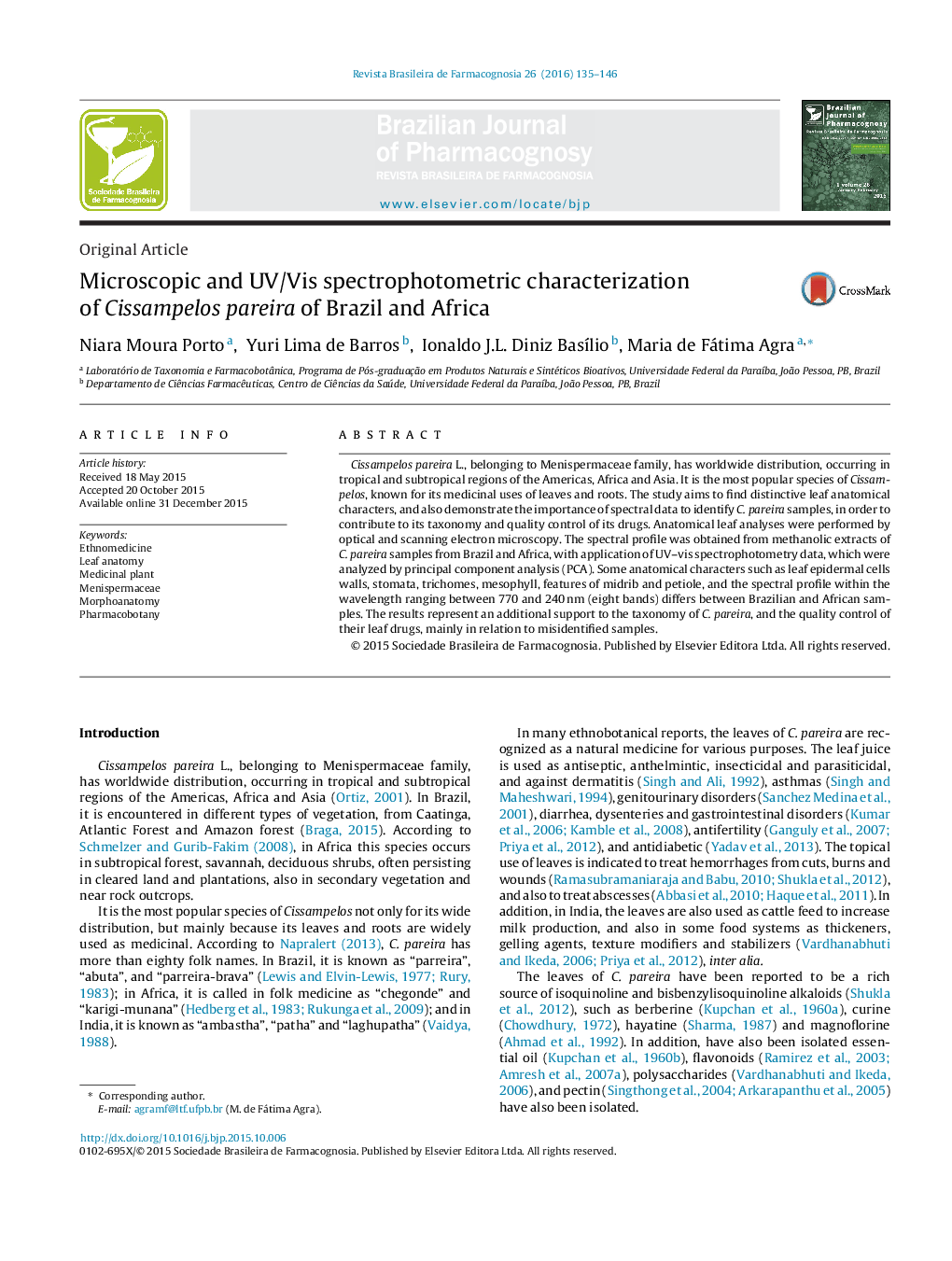| Article ID | Journal | Published Year | Pages | File Type |
|---|---|---|---|---|
| 2577572 | Revista Brasileira de Farmacognosia | 2016 | 12 Pages |
Cissampelos pareira L., belonging to Menispermaceae family, has worldwide distribution, occurring in tropical and subtropical regions of the Americas, Africa and Asia. It is the most popular species of Cissampelos, known for its medicinal uses of leaves and roots. The study aims to find distinctive leaf anatomical characters, and also demonstrate the importance of spectral data to identify C. pareira samples, in order to contribute to its taxonomy and quality control of its drugs. Anatomical leaf analyses were performed by optical and scanning electron microscopy. The spectral profile was obtained from methanolic extracts of C. pareira samples from Brazil and Africa, with application of UV–vis spectrophotometry data, which were analyzed by principal component analysis (PCA). Some anatomical characters such as leaf epidermal cells walls, stomata, trichomes, mesophyll, features of midrib and petiole, and the spectral profile within the wavelength ranging between 770 and 240 nm (eight bands) differs between Brazilian and African samples. The results represent an additional support to the taxonomy of C. pareira, and the quality control of their leaf drugs, mainly in relation to misidentified samples.
Graphical abstractCissampelos pareira L., belonging to Menispermaceae family, has worldwide distribution, occurring in tropical and subtropical regions of the Americas, Africa and Asia. It is the most popular species of Cissampelos, known for its medicinal uses of leaves and roots. The study aims to find distinctive leaf anatomical characters, and also demonstrate the importance of spectral data to identify C. pareira samples, in order to contribute to its taxonomy and quality control of its leaf drugs. Anatomical leaf analyses were performed by optical and scanning electron microscopy. The spectral profile was obtained from methanolic extracts of C. pareira samples from Brazil and Africa with application of UV–vis spectrophotometry data, which were analyzed by principal component analysis (PCA). Some anatomical characters such as leaf epidermal cells walls, stomata, trichomes, mesophyll, features of midrib and petiole, and the spectral profile within the wavelength ranging between 770 and 240 nm (eight bands) differs between Brazilian and African samples. The results represent an additional support to the taxonomy of C. pareira, and the quality control of their drugs, composed by leaves, mainly in relation to misidentified samples.Figure optionsDownload full-size imageDownload as PowerPoint slide
